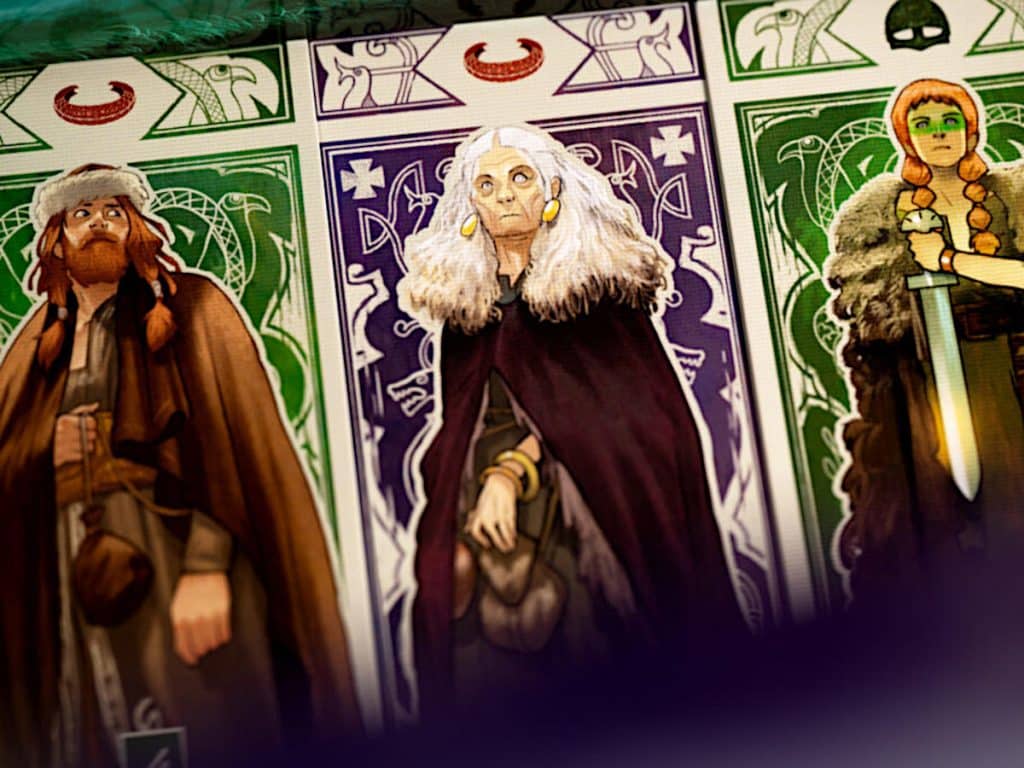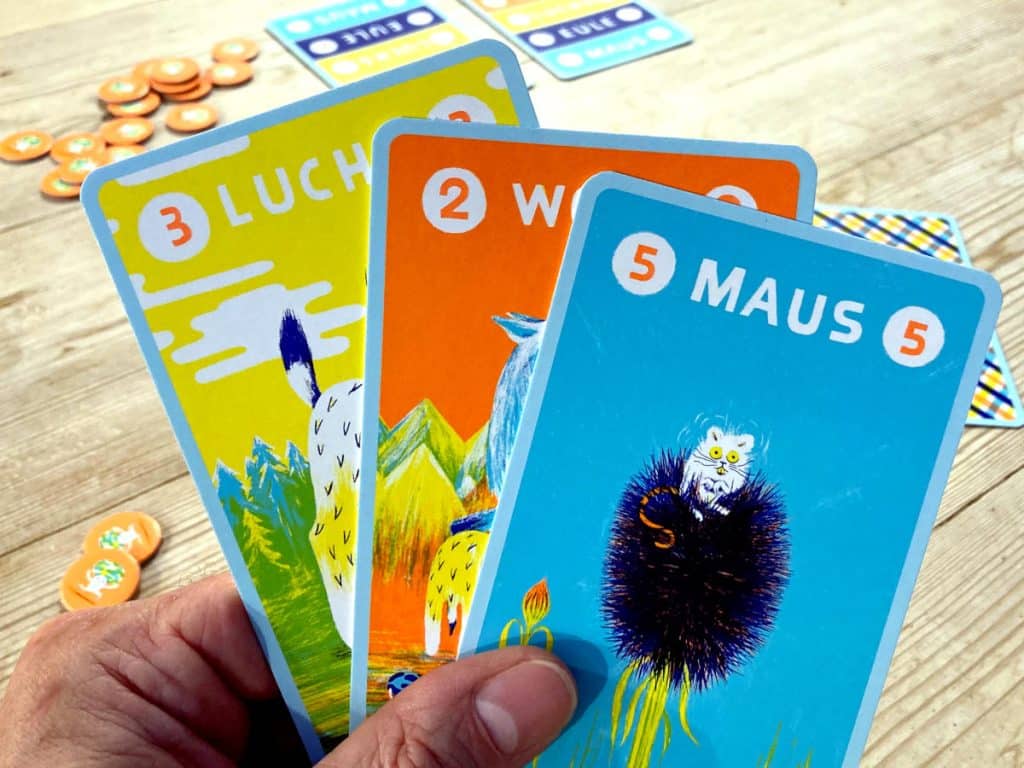I think many of us like games that take an hour or two to play, maybe even longer. I guess that’s at least true when you’ve got a game group you play regularly with. I love longer games, but I also love those quick games that take less than half an hour to learn and play. They’re ideal to play before, after or even in between other games. They’re also perfect for game groups, because you can play them while you wait for others to arrive, after some people have left or in between other games, while some of you freshen themselves up. So in this article, I want to look at these “in-between” games.
Listen to the Audio Version
Intro Music: Bomber (Sting) by Riot (https://www.
Music: La Naranja Borriana by Blue Dot Sessions
Short Games: A Definition
We all have slightly different ideas about what makes the ideal game to play before, after or in between other games. However, I think there are three core metrics: the time it takes to teach, the time it takes to set up and the time it takes to play the game. The quicker the teach, the better. If it’s also quick to set up and doesn’t take longer than around 30 minutes to play, we have a candidate. Of course, game length is very variable and while one group of people might be able to learn, set up and play a game in 20 minutes, another group might take 45 minutes to play the same game. So game length does depend on the people you are going to play with.
To help with game length, I think another very important metric is how much brainpower a game needs. Even a relatively quick game can drag on if you have too many things to think about or too many options to choose from. So you want a game that’s pretty easy-going and is unlikely to cause analysis paralysis. Again, it will depend on your game group as to what is considered “easy-going”. A game that is easy to work out for one person might seem too complex for another.
I have one more metric and that is game size. By that, I mean the box size as well as the amount of space a game takes up on the table. I think that’s quite an important metric and maybe it’s more of a subjective thing, but I feel games that come in big boxes and are table hogs often feel too daunting to be considered as games to be played before, after or in between others.

Short, Sharp Fun
I really love short games. They’re great to play before you start with a heavier game or to relax and chill together afterwards, before it’s time to head home. They’re also really good to play after you finish one game and before starting another. While some of you take a break to have some food or freshen up, the rest of you can get another quick game in.
These games are also often great to play with the family or people who aren’t very familiar with modern hobby games. As games that are quick to teach and learn, don’t take long to set up and play and don’t require too much thinking, they are really useful to introduce people to our hobby or to share with the wider family.
While I still love playing a longer, heavier game that takes a few hours to play, I also need a palette cleanser afterwards or a little warm-up game beforehand. They’re ideal for getting some game time in while you discuss the game you just finished or decide what to play next.
In Between Examples
In my weekly game group, we have a few games we choose to play before the main event, afterwards to wind down or in between two other main games. I found that most of our recent choices are games from Bombyx. Originally it was Sea Salt & Paper, but for a while now, Knarr has been more popular. Since last month, Pixies is now also part of the trio.
All three are fairly different games, but all three have good stats when it comes to my in-between-game metrics. They are quick to teach, quick to set up and quick to play. They all also come in relatively small boxes and don’t take a huge amount of space on the table. Pixies might be the only exception, because of the 3×3 grid of cards everyone is going to have in front of them.
Most recently, I also consider Prey Another Day a short game that is great to play in between others. You can play it once or even multiple times, depending on how quickly someone wins. It’s super quick to teach and set up as well.
None of these four games takes too much thinking, with Knarr maybe being the only game that requires a bit more concentration and thought. Sea Salt & Paper and Pixies also need a little bit of thinking, but it isn’t too bad, while Prey Another Day is pretty straightforward and it’s more about bluffing and predicting what the rest of the players might be going to do.

What About You?
So what do you think of quick, short games, like I’ve been talking about? Do you like these types of games? If so, are there metrics you would add to your requirements? Or maybe you think one of my metrics isn’t important? What games can you add to my list? As always, please share your thoughts and experiences in the comments below. I’d love to hear from you.
If you enjoyed this article, please have a look at my support page to see how you can help keep the blog going.
Useful Links
- Bombyx: https://studiobombyx.
com/ en/ - Sea Salt & Paper review: https://tabletopgamesblog.
com/ 2023/ 07/ 08/ sea-salt-paper-saturday-review/ - Knarr review: https://tabletopgamesblog.
com/ 2024/ 07/ 20/ knarr-saturday-review/ - Pixies review: https://tabletopgamesblog.
com/ 2024/ 08/ 10/ pixies-saturday-review/ - Prey Another Day review: https://tabletopgamesblog.
com/ 2024/ 08/ 17/ prey-another-day-saturday-review/
4 Comments
What are you thoughts?
Add your thoughts on the topic to the form below and join the conversation.
Audio Version
Intro Music: Bomber (Sting) by Riot (https://www.
Music: La Naranja Borriana by Blue Dot Sessions
Playlist
These are the songs I listened to while I was writing this topic discussion article:







Great article, thanks for sharing! I’ve always appreciated quick games that can fill those “in-between” moments during game nights. I really like how you’ve broken down the key metrics—especially the importance of quick teaching time and compact box size. Those factors definitely make a game more appealing when you’re looking for something fast and easy.
In my group, we often turn to Codenames or For Sale before diving into heavier games. They’re simple but deliver a lot of fun in a short time. Your mention of Sea Salt & Paper caught my attention—sounds like it might be a perfect fit for us. Are there any other games in this category you’d recommend for groups that enjoy a bit more player interaction?
Hello Dixrix. I’m glad you found the article useful. That’s great to hear. If you get on with Sea Salt & Paper, then I suggest you also try Pixies, Odin and Prey Another Day. They might be along the lines of games you like.
Thanks for the suggestions!
No problem. I’m glad you found them useful.